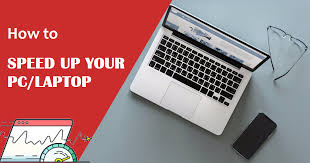
How to Speed Up Your Computer: Free Tips and Tricks for Windows 10
Is your computer running slower than usual? Whether you’re using an older machine or a newer one, over time, your computer can start to lag, making even simple tasks feel frustrating. The good news is that there are several ways to speed up your computer, and many of them are completely free. In this article, we’ll cover how to speed up your computer, how to do it for free, and specific tips for Windows 10 users. Let’s dive in!
How to Speed Up Your Computer
1. Uninstall Unnecessary Programs
Over time, your computer accumulates programs that you no longer use. These programs take up valuable storage space and can slow down your system. To uninstall them:
- On Windows 10, go to Settings > Apps > Apps & Features.
- Scroll through the list and uninstall any programs you don’t need.
2. Disable Startup Programs
Many programs automatically start when you boot up your computer, which can slow down the startup process. To disable these:
- Press Ctrl + Shift + Esc to open Task Manager.
- Go to the Startup tab and disable programs that aren’t essential.
3. Clear Temporary Files
Temporary files can clog up your system over time. Use the built-in Disk Cleanup tool to remove them:
- Type Disk Cleanup in the Windows search bar and select the tool.
- Choose the drive you want to clean and select the file types to delete.
4. Upgrade Your Hardware
If your computer is still slow, consider upgrading your hardware. Adding more RAM or switching to an SSD (Solid State Drive) can significantly improve performance.
How to Speed Up Your Computer for Free
1. Optimize Your Storage
Windows 10 has a built-in feature called Storage Sense that automatically frees up space by deleting temporary files and emptying the recycle bin. To enable it:
- Go to Settings > System > Storage.
- Turn on Storage Sense.
2. Run a Virus Scan
Malware and viruses can slow down your computer. Use Windows Defender or a free antivirus program to scan and remove any threats:
- Open Windows Security from the Start menu.
- Click on Virus & Threat Protection and run a full scan.
3. Adjust Visual Effects
Windows 10 comes with visual effects that can slow down older computers. To adjust these:
- Right-click on This PC and select Properties.
- Click on Advanced system settings and go to the Advanced tab.
- Under Performance, click Settings and choose Adjust for best performance.
4. Keep Your System Updated
Windows updates often include performance improvements. Make sure your system is up to date:
- Go to Settings > Update & Security > Windows Update.
- Click Check for updates and install any available updates.
How to Speed Up Your Computer Windows 10
1. Use the Built-in Troubleshooter
Windows 10 has a built-in troubleshooter that can help identify and fix performance issues:
- Go to Settings > Update & Security > Troubleshoot.
- Run the Performance troubleshooter.
2. Reset Your PC
If your computer is still slow, consider resetting it. This will reinstall Windows 10 while keeping your personal files:
- Go to Settings > Update & Security > Recovery.
- Click Get started under Reset this PC.
3. Enable Game Mode
If you’re a gamer, enabling Game Mode can improve performance by prioritizing system resources for games:
- Go to Settings > Gaming > Game Mode.
- Turn on Game Mode.
How to Speed Your Computer Up
1. Defragment Your Hard Drive
If you’re using a traditional hard drive (not an SSD), defragmenting can improve performance:
- Type Defragment and Optimize Drives in the Windows search bar.
- Select your drive and click Optimize.
2. Close Background Apps
Background apps can consume system resources. Close any apps you’re not using:
- Press Ctrl + Shift + Esc to open Task Manager.
- End tasks for unnecessary apps.
3. Increase Virtual Memory
Increasing virtual memory can help improve performance on systems with limited RAM:
- Right-click on This PC and select Properties.
- Click on Advanced system settings and go to the Advanced tab.
- Under Performance, click Settings and go to the Advanced tab.
- Click Change under Virtual Memory and set a custom size.
FAQs
Q: How can I speed up my computer for free?
A: You can speed up your computer for free by uninstalling unnecessary programs, disabling startup programs, clearing temporary files, running a virus scan, and adjusting visual effects.
Q: How do I speed up my Windows 10 computer?
A: To speed up a Windows 10 computer, use Storage Sense, run the Performance troubleshooter, reset your PC, enable Game Mode, and keep your system updated.
Q: What is the fastest way to speed up my computer?
A: The fastest way to speed up your computer is to upgrade your hardware, such as adding more RAM or switching to an SSD. Software solutions like disabling startup programs and clearing temporary files can also provide quick improvements.
Q: Can I speed up my computer without spending money?
A: Yes, you can speed up your computer without spending money by optimizing storage, running virus scans, adjusting visual effects, and keeping your system updated.
Q: How do I speed up an old computer?
A: To speed up an old computer, uninstall unnecessary programs, disable startup programs, clear temporary files, defragment the hard drive, and consider upgrading the hardware if possible.
By following these tips, you can breathe new life into your computer and enjoy faster performance without spending a dime. Whether you’re using Windows 10 or an older version, these strategies will help you get the most out of your machine. Happy computing!